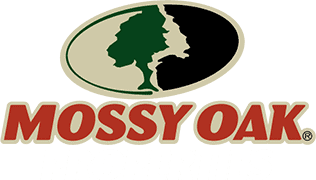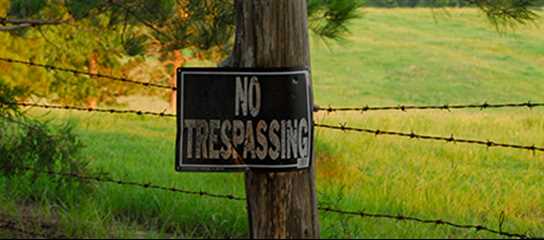Drawing The Line: Property Lines & Borders are an Integral Part of Management

If you are a landowner, then regardless of whether you own 80 or 10,000 acres, your property has legally defined property lines. The purpose behind property lines is simple-provide a way of knowing what is yours and what is your neighbor’s. Thanks to property lines, and real estate laws in general, we can enjoy and manage our property as we see fit and can limit access from the public. People want security and control. The only way to have that is by establishing property lines and protecting them at all costs.
This Land is My Land, That Land is Your Land
With each passing day, the old adage of “good fences make good neighbors” rings all the more true. As the urban sprawl our nation faces cuts into once rural areas and reduces the amount of rural or recreational land, access to quality hunting land becomes a growing problem for the nations’ outdoors enthusiasts. As an unfortunate result, trespassing has become more prevalent, making the need for well-defined property lines a key part of property management. Trespassing is a major problem that can impact the value of your property, can limit your enjoyment of your place and can even pose a threat to the safety of those who hunt and recreate on your land. While the majority of the cases of trespassing are intentional and malicious, some do occur because the property lines were not properly established via marking paint, posted signs, or fences. It is important to do everything in your power to establish visible and defined property lines for everyone to see. You do not want to give a trespasser any ground to stand upon in court should the need ever arise. If you have well defined property lines in place, a trespasser cannot plead ignorance as a defense and you will establish an implied mutual understanding with your neighbors.
The first step in properly marking property lines is to make sure you know where the deeded property lines are. It may be a good idea to have a survey done to make sure there are no discrepancies in any perceived property lines; fences and old paint lines are not good indicators of the property lines described in the legal description. Many disputes between neighboring landowners arise from disagreements over the location of property lines. Sometimes mere feet can result in costly lawsuits, so be sure to consult with a state licensed surveyor, so much of the burden of accuracy will fall back on him.
Once a reputable surveyor has flagged or temporarily marked the property lines, you need to establish some more permanent lines by either painting trees on the line, building a fence, or putting posted stakes up. Fences may be necessary in open areas where trees are not available for marking. Posted signs should be, at a minimum, placed at all gates or access points and on each corner of your line and they should be very visible to the public. We personally place a posted sign every 300 yards along a painted boundary line. Again, remember that visibility is important and it is hard to argue a well-established property line.
Barbed wire fences may be necessary in areas where livestock, such as cattle, could end up on your property. Even though the responsibility of maintaining fences for livestock really falls back on the farmer, you may be better off having a fence built than having cows dining on your food plots. Remember to be cordial yet firm if a neighbors’ livestock does wander onto your property; most farmers will be eager to remedy the problem and have their fences repaired as long as you are understanding when handling it.
One more piece of advice-if you want to prevent the public, or your neighbors, from viewing open areas (such as a food plot) on your property, consider planting “screening cover” to limit visibility. Nativ Nurseries makes a great product under their Nativ Seeds product line that can help form a visual barrier and prevent “night hunting” or the public seeing on to your property.
A Bonus for Borders
Property lines can also double as access roads. On our property, we try to have roads that wrap around the perimeter of our place; with the main reason, being these roads can provide the most efficient, low-impact travel routes to enjoy our property. Additionally, they add another buffer against trespassing, as foot tracks are more visible in dirt than grass or leaves. Also, the perimeter roads can be used as fire lanes to not only prevent prescribed fires you conduct from getting out of control, but also to prevent fires from adjoining landowners causing costly damage to your property.
The Returns on Borders
When you look at the impact that having properly marked boundaries can have on the resale value of your property, it makes the time, money and effort needed to establish them a drop in the bucket. Buyers want secure investments and if the property has quality gates, well-established fences and/or marked lines, they will feel more at ease that problems such as trespassing and poaching will be avoided. In some cases, it could be the difference between the buyer writing a check or not.
A prime example is a tract of land I had listed to sale several years ago. The property was owned by absentee landowners and was as good of a recreational and timber tract as you could find. However, the tract was plagued by trespassers and poaching, due in part to the landowners doing little to maintain their property lines. As a result, several buyers passed on the property and it developed a “black cloud.” The landowners eventually sold it and took a sizable loss on the sale. The buyers have since fixed up the property lines and reached out to their neighbors and trespassing is no longer a problem. If that same property were to sell, today it would likely sell at the market value or even above. So yes, establishing access control is very important!
As you can see from this example, “border control” is very important. Remember to keep in mind that you can do whatever you want to the interior of your property, but if you do not protect your borders, all may go for naught. Take the time to make sure you place an emphasis on the boundaries!



